fall inside a hole
Hong Kong C12 Gearbox Repairs
The Round-Trip that wasn't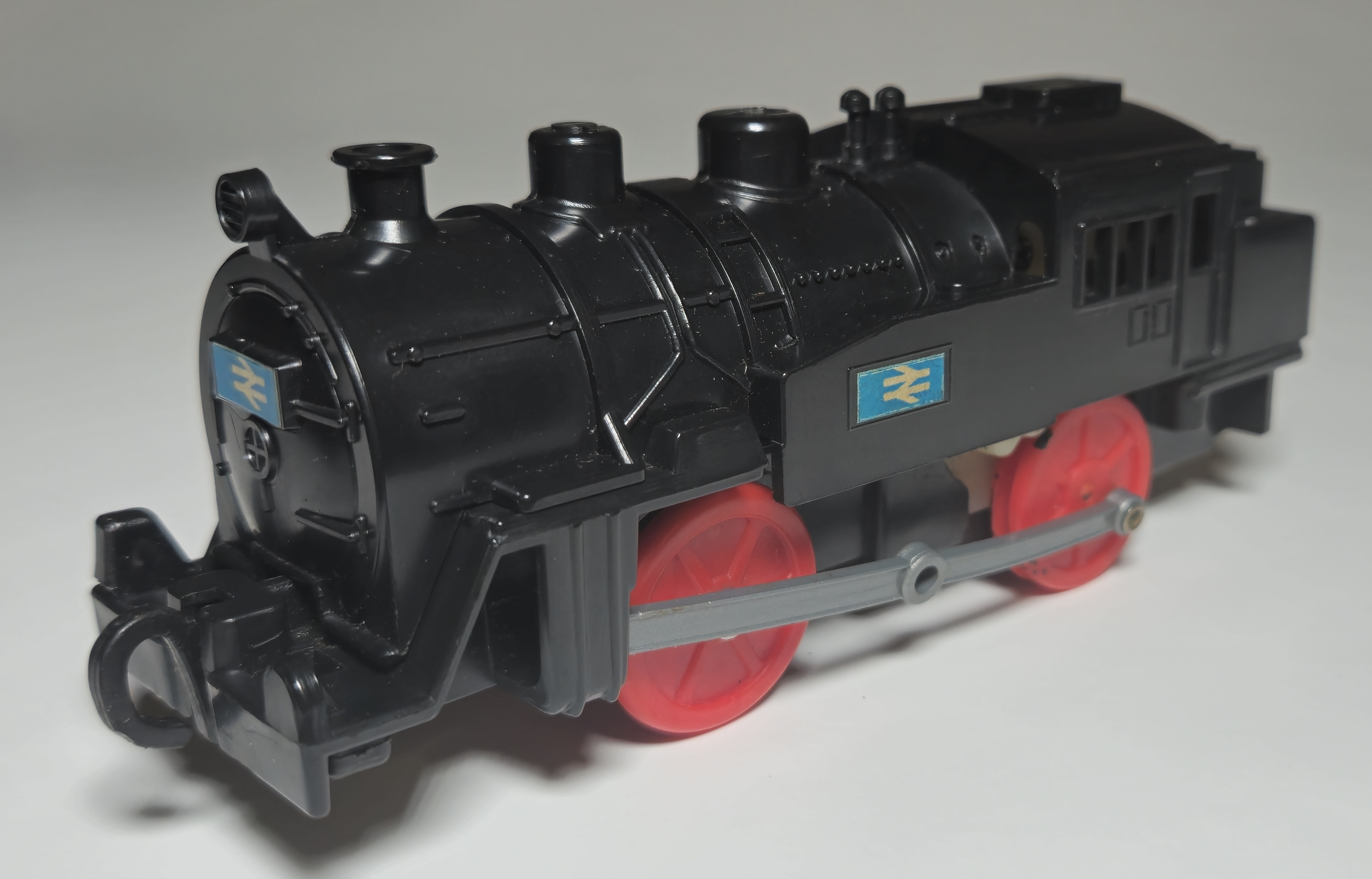
In the later 1970s Tomy exported C-12 steam locomotives for some export train sets, namely the British Palitoy Discovery Time series and the German Stelco Junior Express series. These engines were produced in Hong Kong, not Japan as all domestic Plarail was at the time. Externally these C12s are similar to the domestic Plarail release with a front coupler and power switch attached to a sliding light on the running board, but have a few differences like the hollow metal crank pins and older style of coupling rods that were used on Japanese C-12s in the earlier 1970s but were phased out by the time these locomotives were produced (perhaps after it was finished being used in Japan, the tooling was sent to Hong Kong to serve as the coupling rods for these engines). The Palitoy version of these C12s has other changes like grey siderods instead of yellow and British Rail "arrow" logo stickers instead of the "C12" ones.
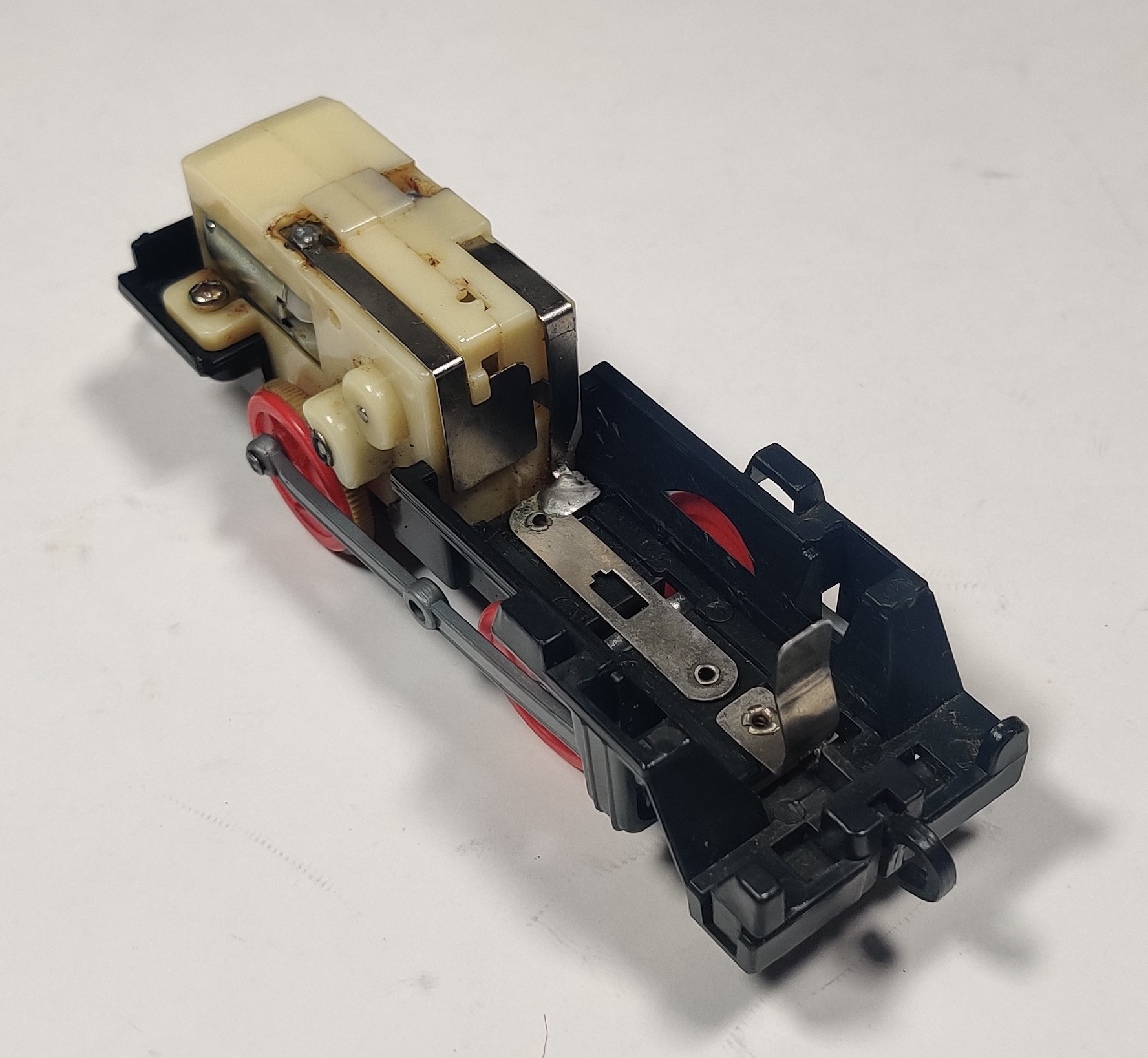
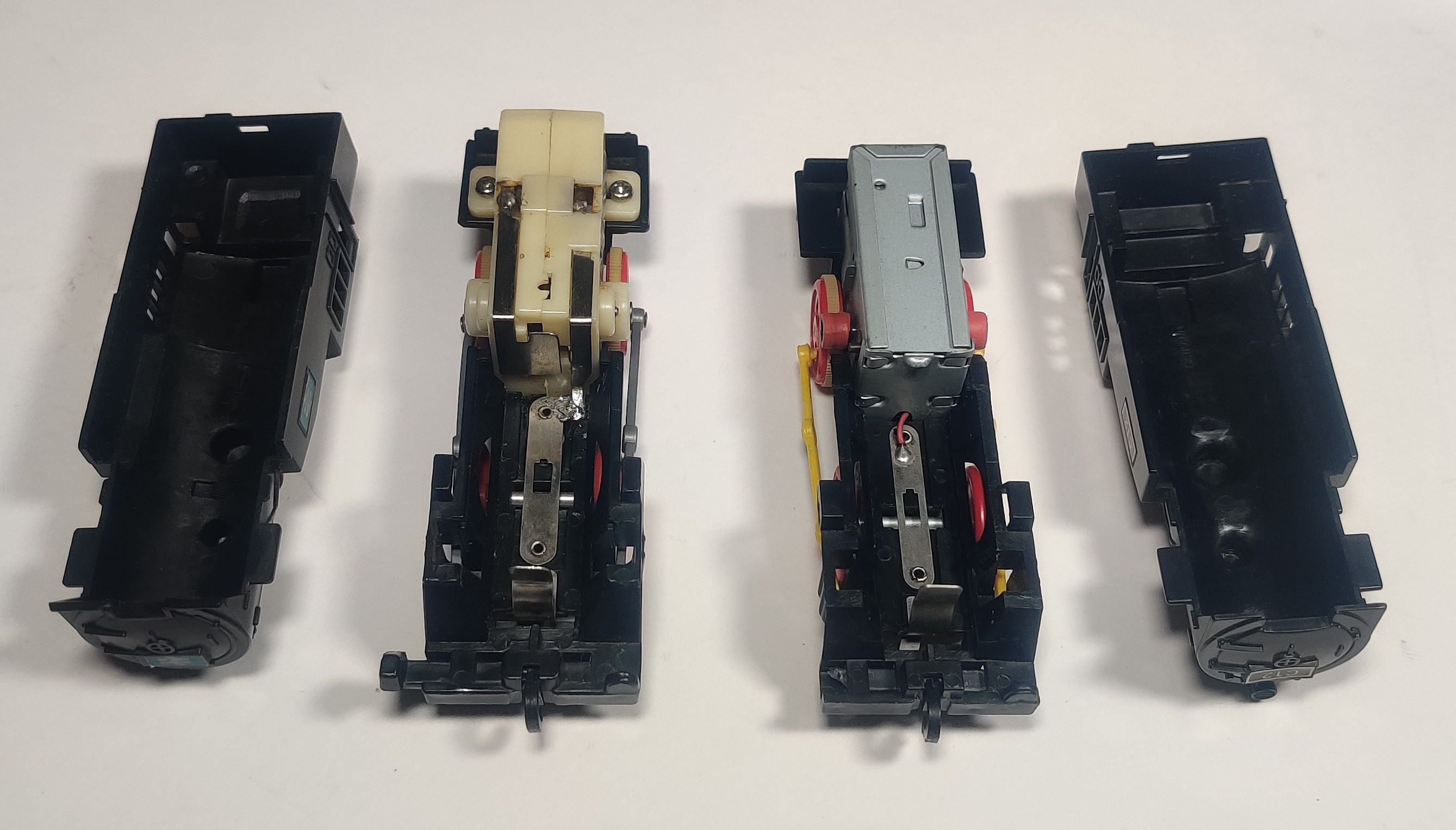
These C12s were somewhat odd in that they used plastic rim-drive gearboxes with "internal" drive tires instead of the metal old power gearbox used in C-12s from their inception in the early 1970s to the transition to new power in the mid 1990s. Because the rim-drive tires are contained almost completely within the gearbox, disassembling the gearbox is required in order to replace the almost certainly degraded friction-drive tires.
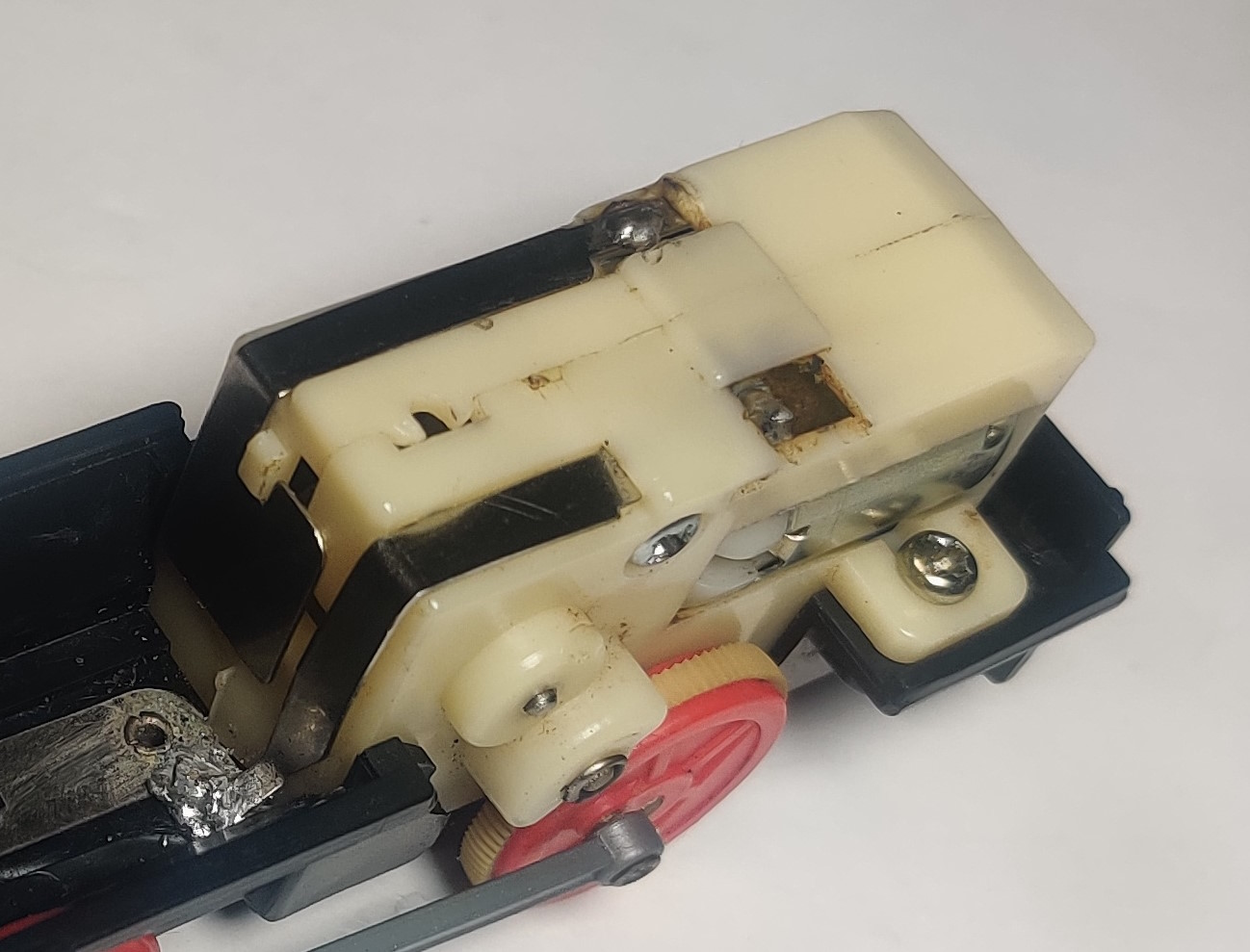
Instead of bent metal tabs like the traditional old power C12s these gearboxes are screwed into the chassis molding with the negative battery contact strip soldered onto the contact strip going to the left side of the motor. This tab must generally be unsoldered to remove and service the gearbox. Be careful to not melt or deform the plastic underneath and around this joint.
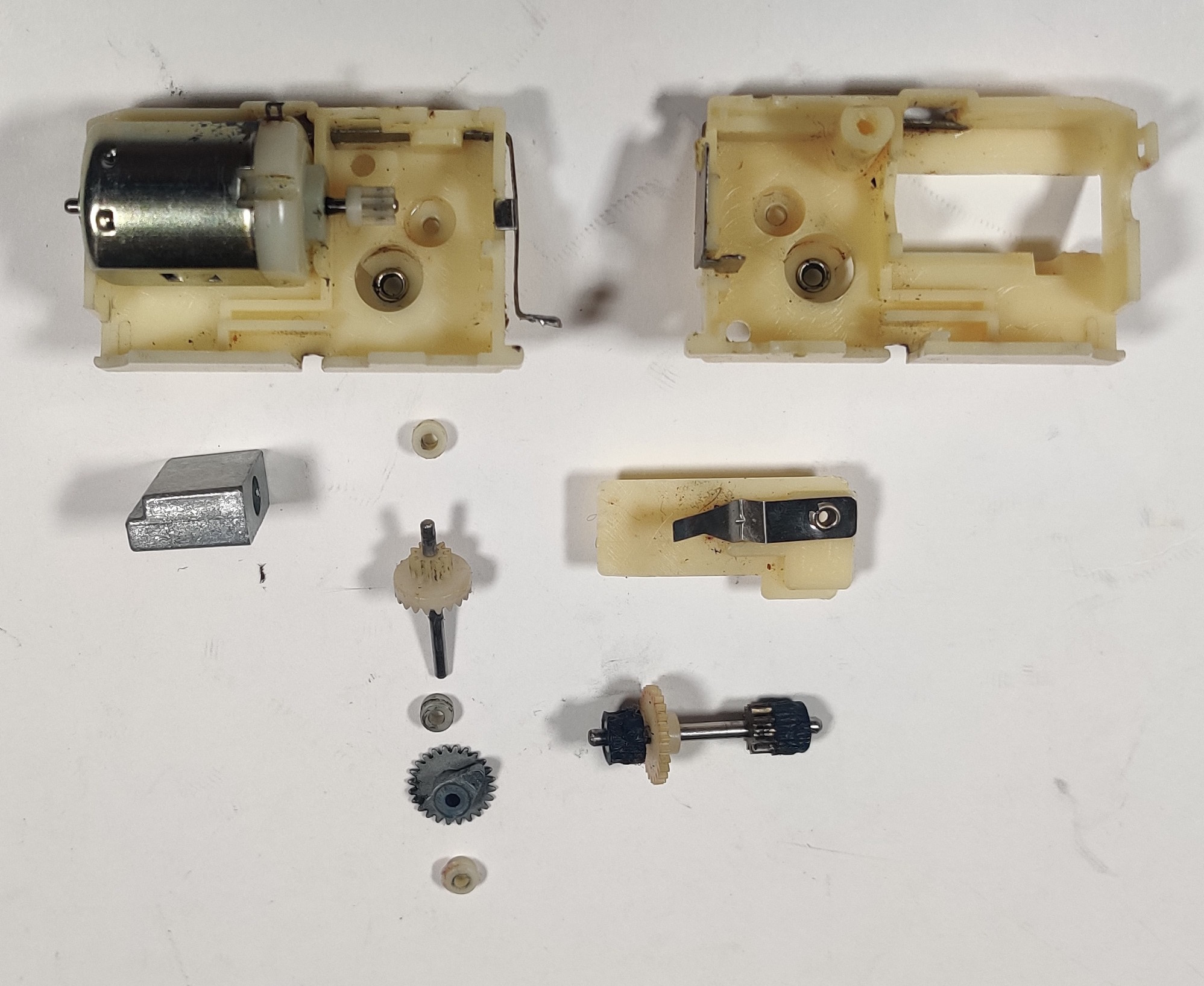
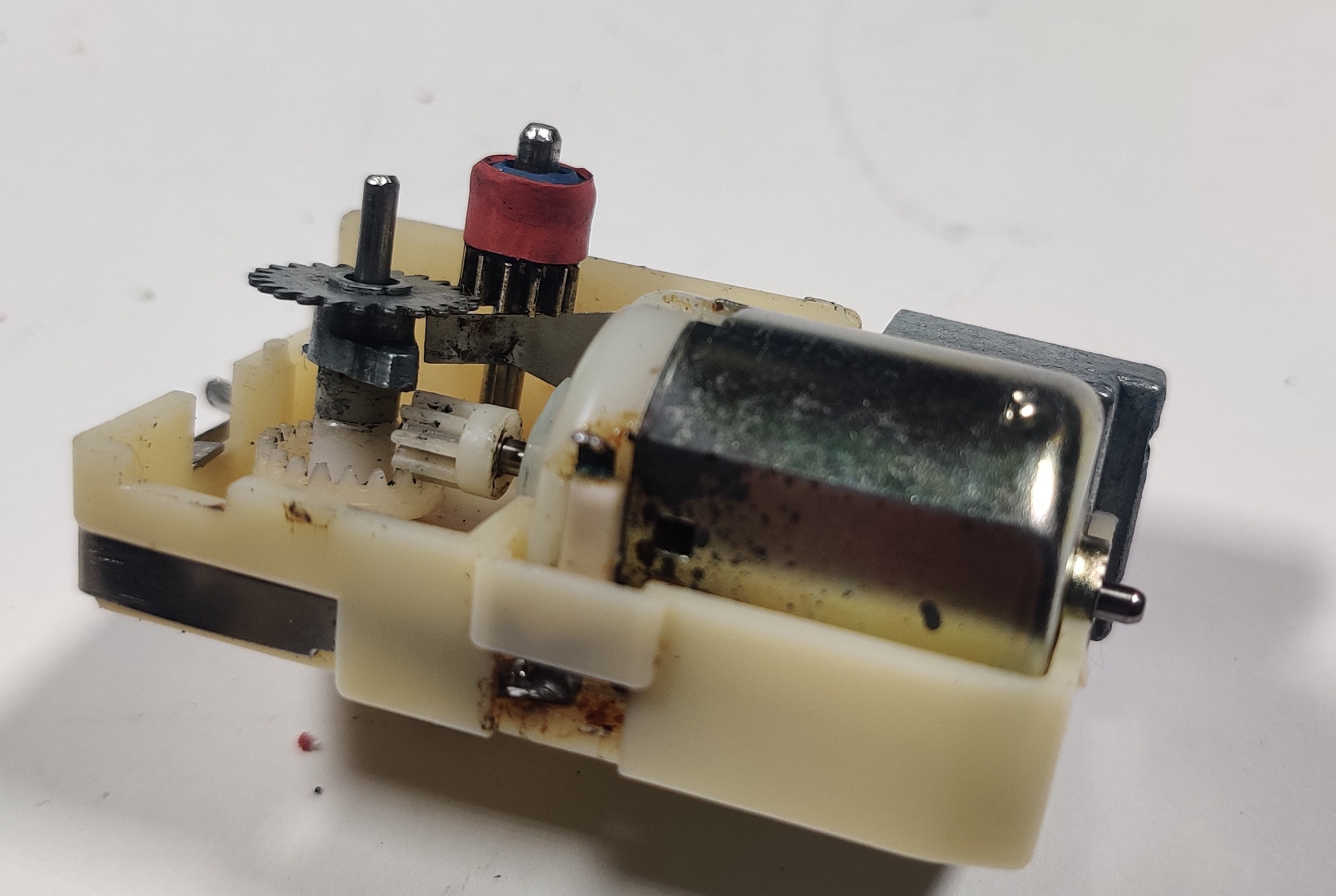
A single screw holds the gearbox closed from the side. At least one of the contact strips to the motor must also be desoldered - I suggest the right side. Inside the gearbox, a contrate gear reducing from the 8 tooth motor pinion transmits power to an integrated spur gear which reduces with a gear on the friction-drive shaft. There is a chance that the motor pinion will be split. The rubber drive spools (replaced with layers of heat-shrink tubing on this example) reduce again against the rubber traction tires on the locomotive's driving wheels. An integrated metal cog drives a free-spinning metal cam on the previous shaft which hits the clicker which sticks up over the output shaft. The clicking "chuffer" sits on a plastic insert that fits into the cavity at the bottom of the gearbox. Three spacers hold the contrate gear and cam in place (the top spacer is left off in the right photograph).
The rim-drive tires will likely need to be replaced. I used several layers of heat-shrink tubing as described here as the original tires were too misshaped and gouged to repair with a single layer. In the early 80s the Stelco C12 tooling was changed to use a direct-drive gearbox with an angled motor, with some other strange changes like a yellow power switch lamp and raised C12 text instead of stickers. This version of the Stelco C12 can be seen in this blog post from the chairman of the Plarail Museum.
Round-Trip Origins
It appears that the toolings used to produce these C-12s in Hong Kong were at some point intended to be used on a Round-Trip C-12. "Round-Trip" (おうふく "oufuku" or later 往復 "round trip") Plarail was a range of trains and sets with the gimmick that the engines could reverse thanks to a special gearbox and reverser tracks. Let's explore:
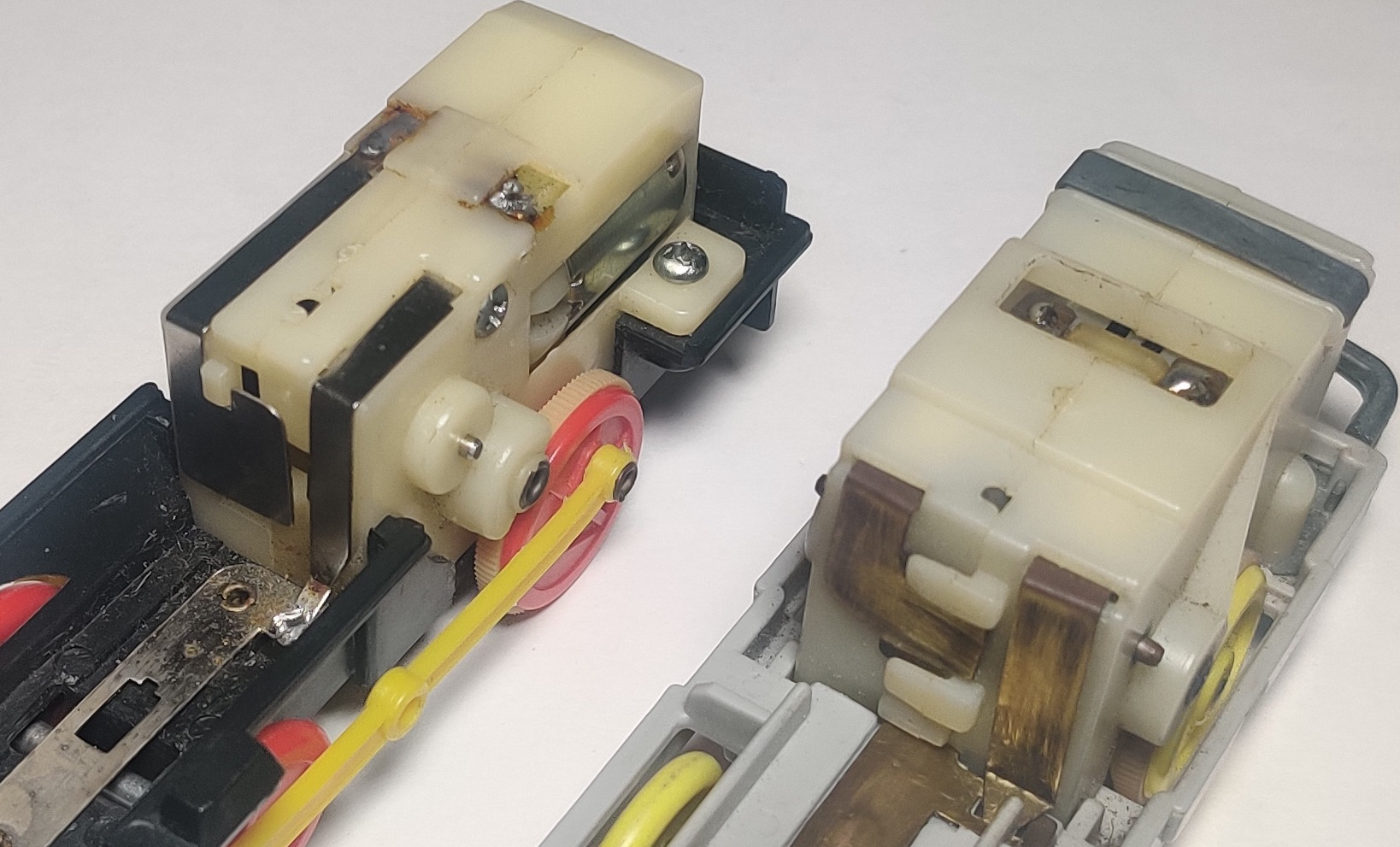
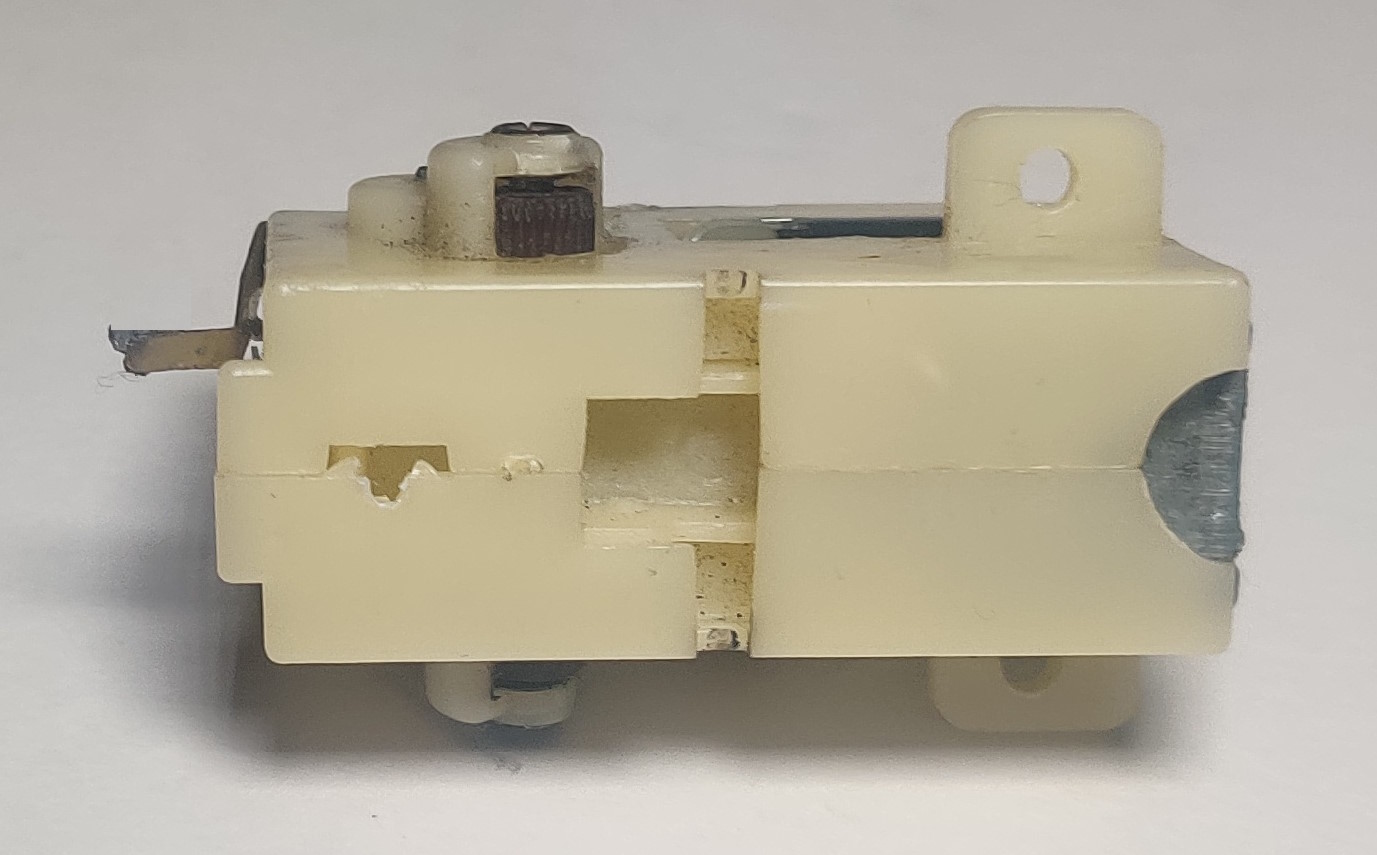
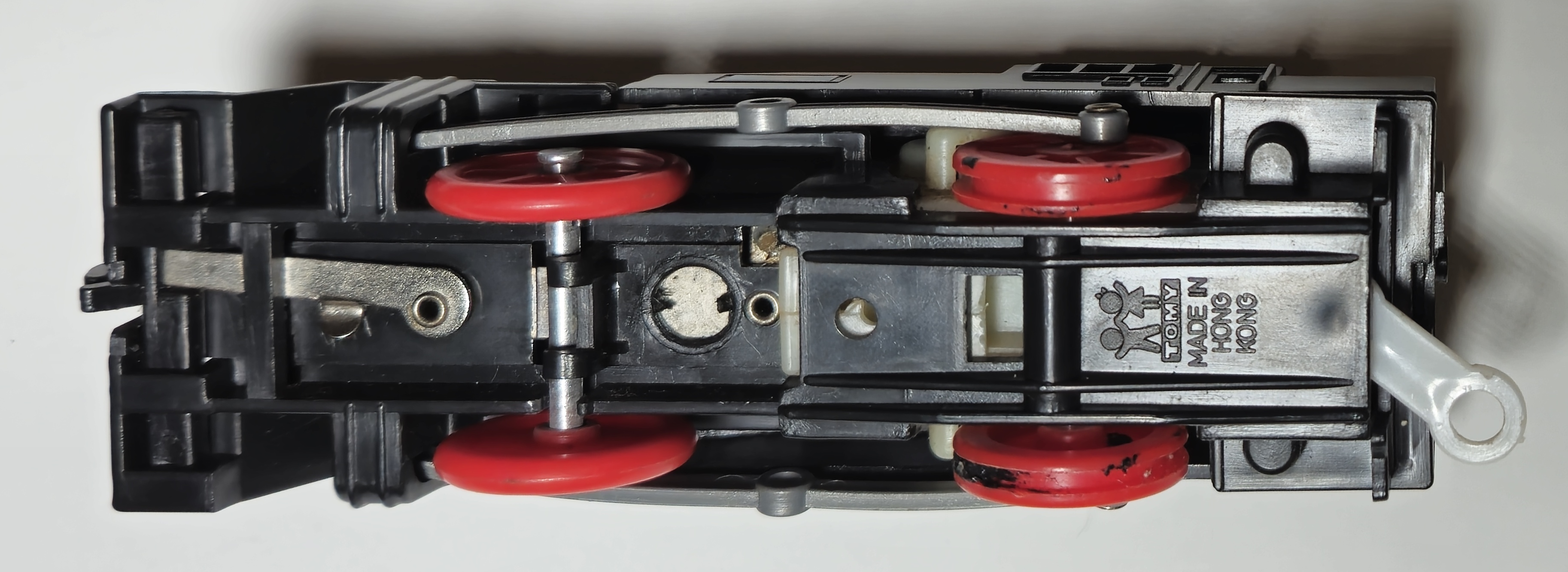
The molding of the plastic gearbox includes supports on the top and bottom for a "flipper" like that used in the Round-Trip gearbox. There is also a cutout in the bottom for the directional change lever. I first noticed this when servicing my Palitoy C12. I had known for some time that the Palitoy and earlier Stelco C12 that I have both did not have an activation tab catch on the bottom, which was odd, but then I remembered that Round-Trip locomotives also do not have an activation tab. I figured if there was an opening where the reverser lever would hang down in the chassis molding that would probably confirm that at some point the tooling was intended to have a reversing gearbox, and sure enough when I looked at the bottom of the Palitoy C12 it has a perfect gap right where the reverser would hang.
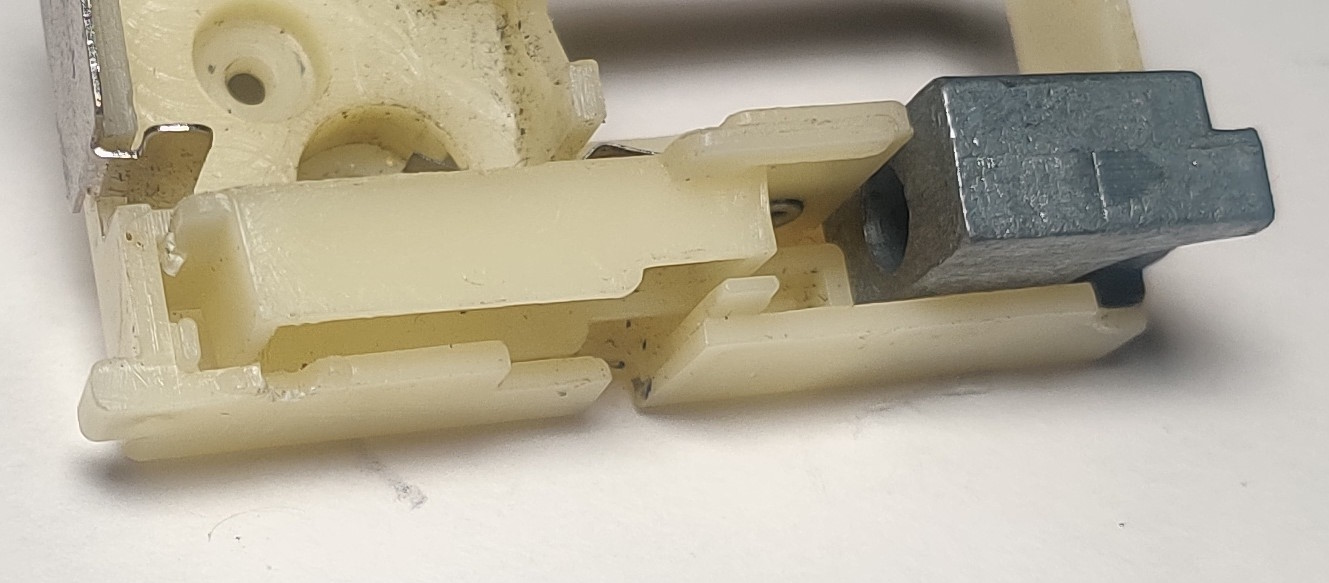
The clicker noisemaker in these gearboxes sits inside the cavity where the spring-loaded wedge to ensure the flipper stays in position would have sat. The weight used in these gearboxes has a hole machined into it like the hole for the spring on the reversing gearboxes. The gears used in the non-reversing gearbox simply sit in the same molded holes that the round-trip gears would have, with a single contrate gear in the forward position.
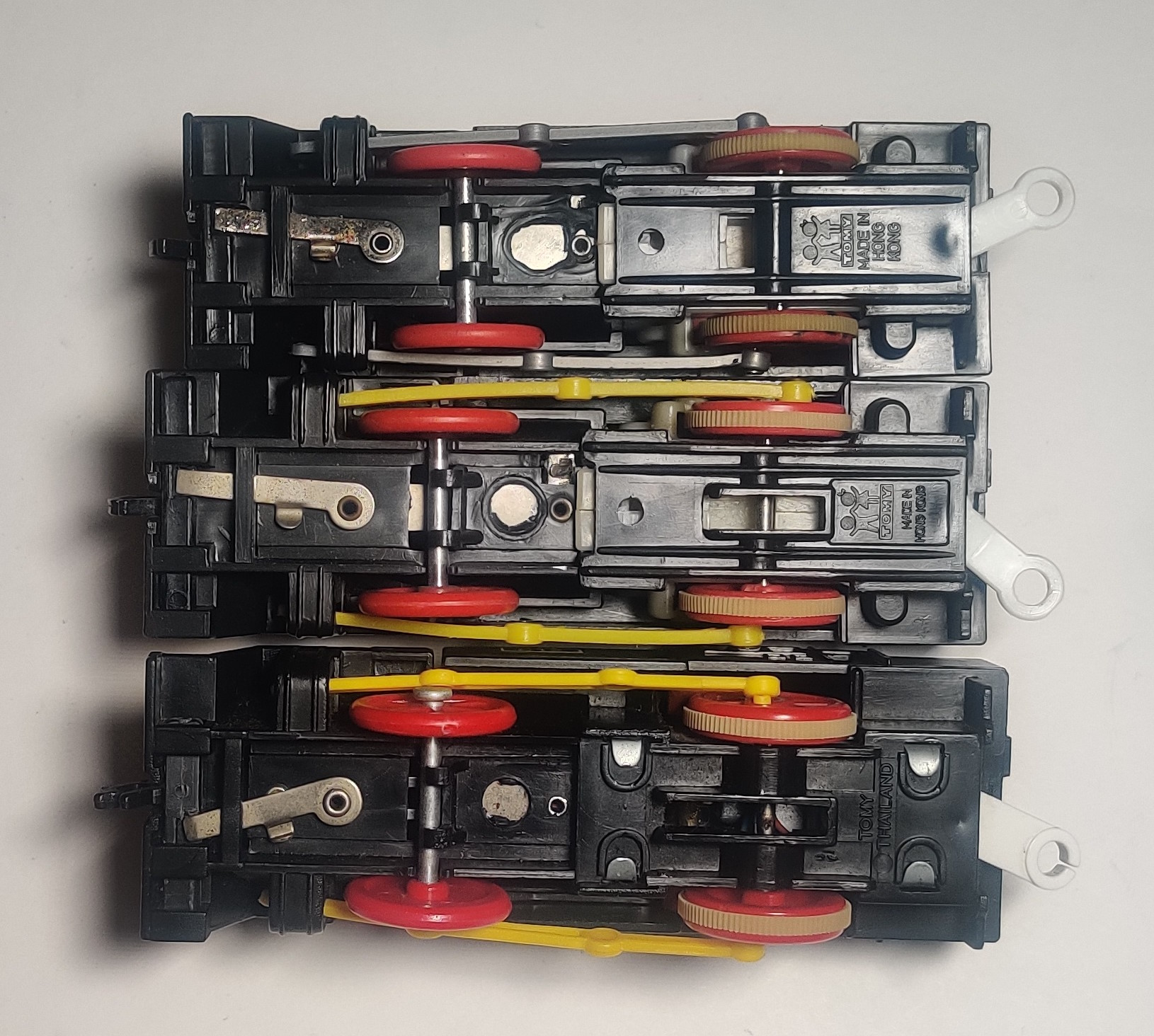
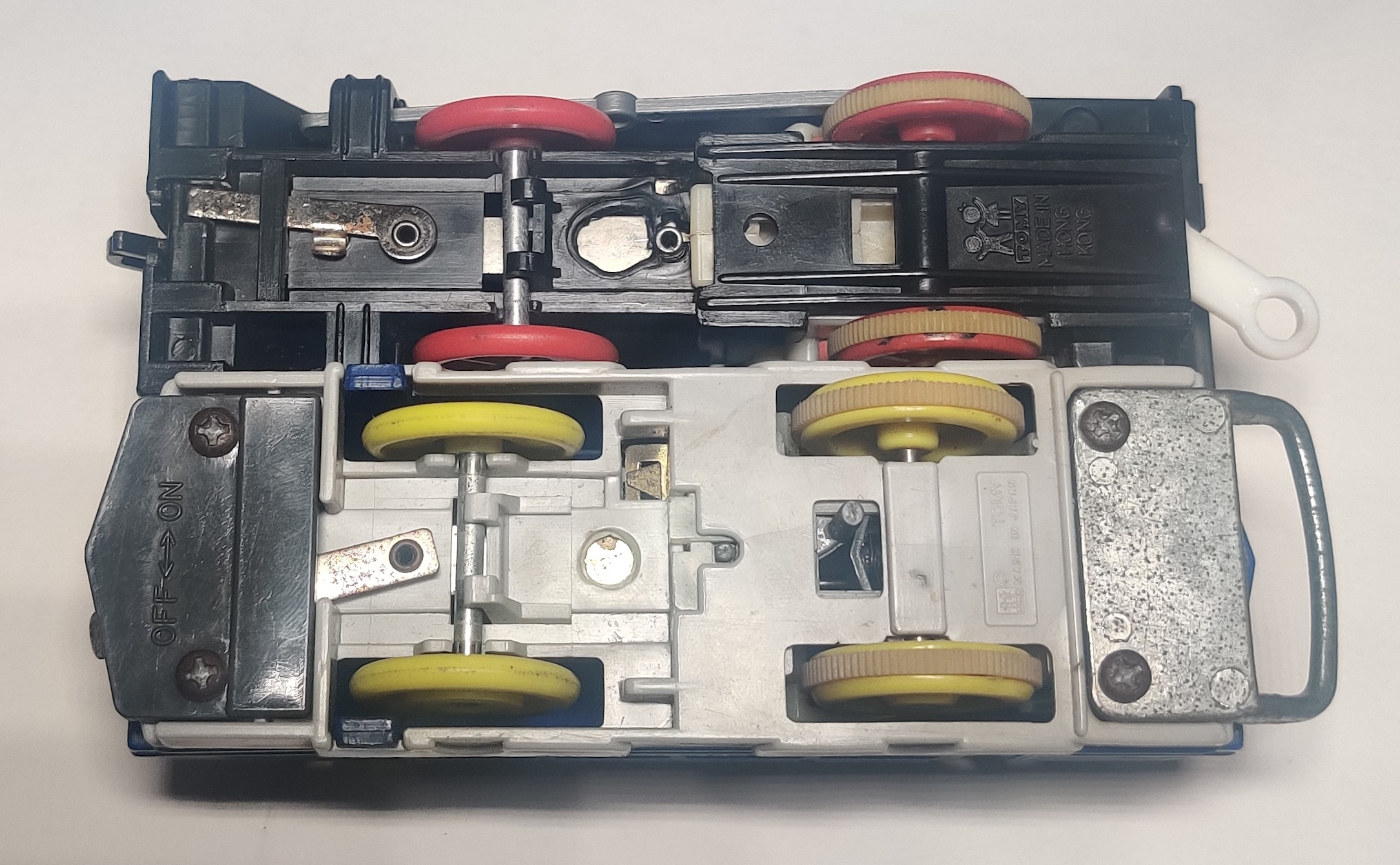
I have two variants of the Stelco C12. They use slightly different gearboxes but both appear to have all the molding features necessary to facilitate a reversing geartrain of the same design. The seemingly later C12 has an activation tab and no cutout for the reversing lever in the chassis, although it is still obviously different from the metal gearbox chassis.
I can not imagine why these C12s have a reversing-capable gearbox and a cutout for the reverser lever in the chassis and no activation tab catch other than if the tooling was originally for a Round-Trip C-12 that was never produced for some reason. Perhaps Tomy did not like how it performed, or did not want to put another gearbox with unique components into production.
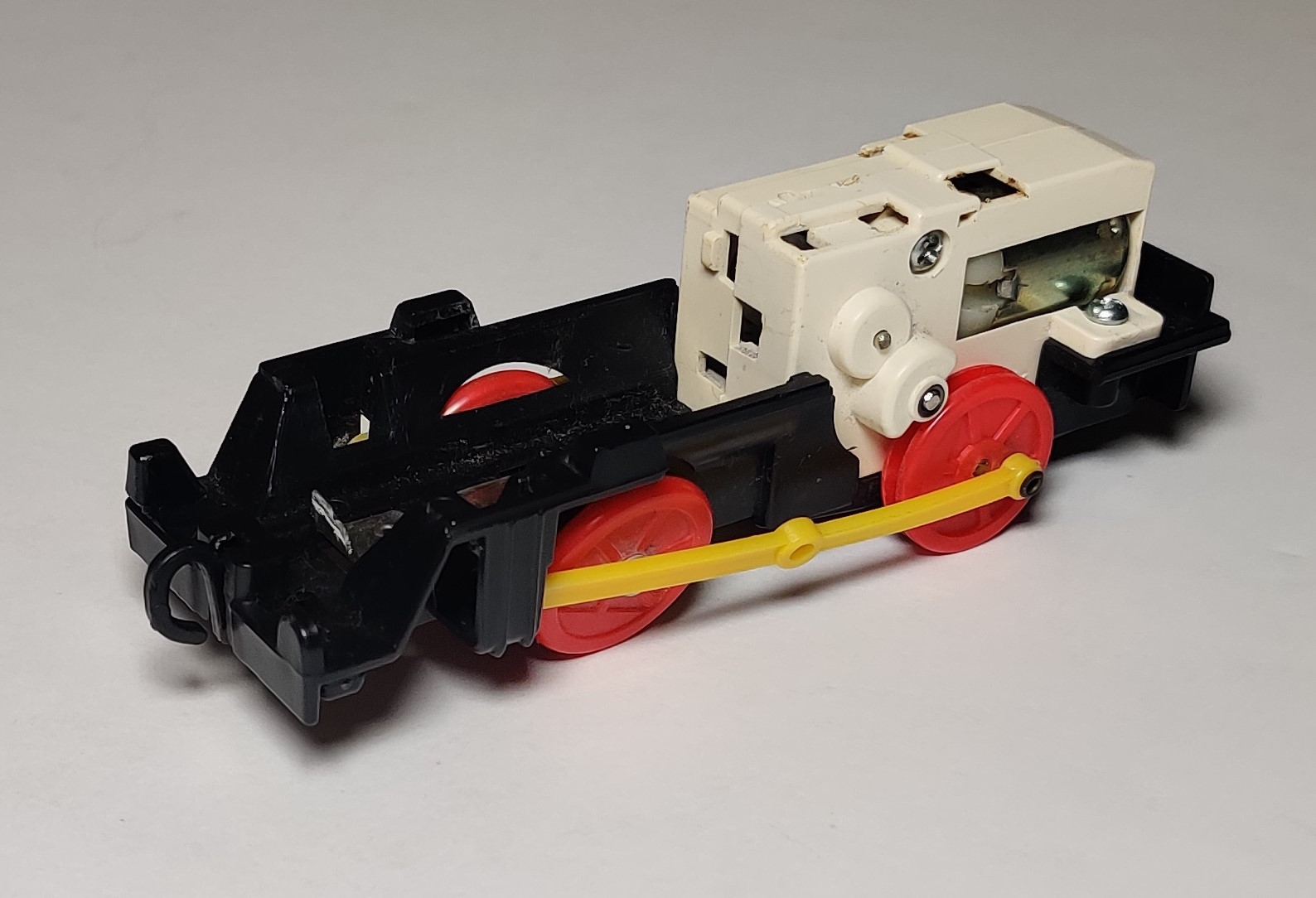
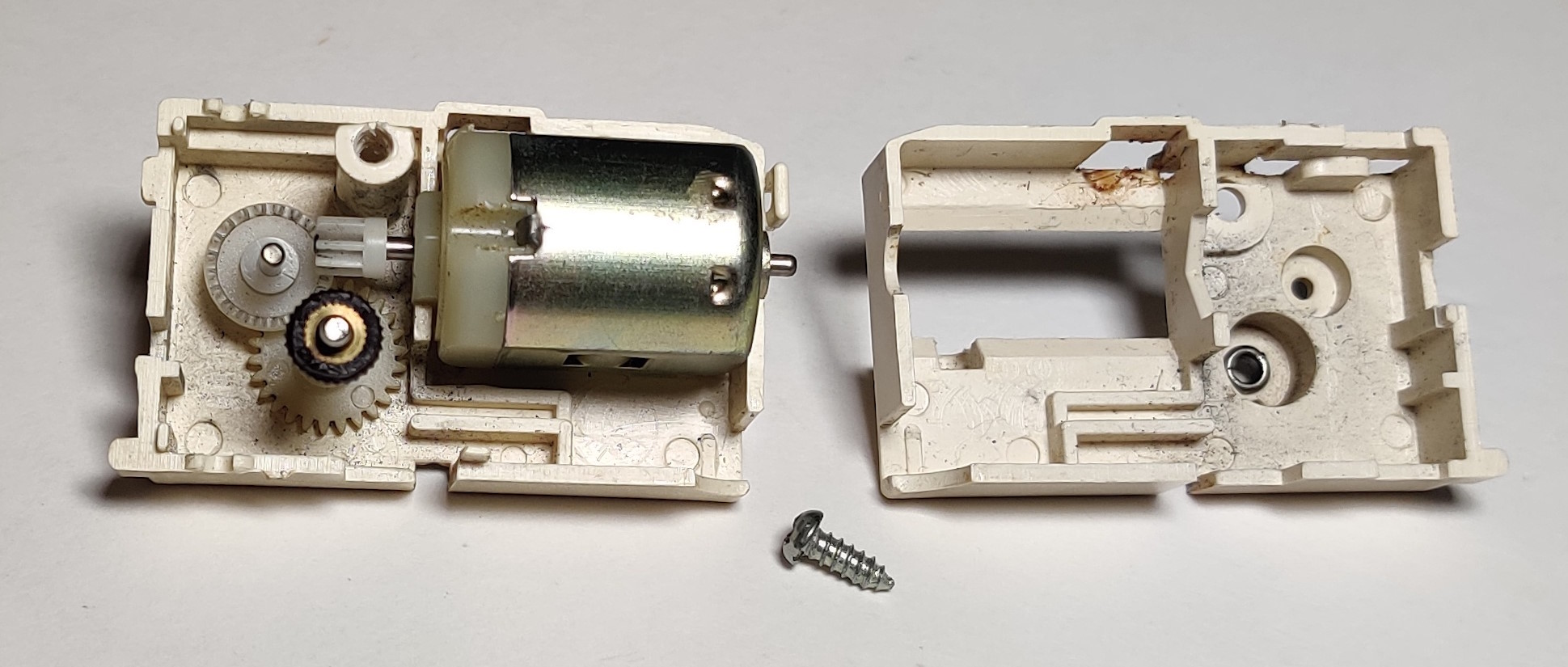
The early Stelco C12 I have is in somewhat rough shape, with missing stickers and a mostly gutted gearbox. At some point before I bought it in 2021 someone removed the contact strips, front battery contact, motor brushes, weight, and clicker. This gearbox is a less milky and more white plastic than the Palitoy or later Stelco gearboxes. I set the C12 aside for a few years, as I had the second later functioning one as well as the Palitoy C12 of similar make. After purchasing a for-parts old gearbox round-trip EF66 in November 2023 but before it arrived in early December I made the realization that I could most likely fit the components from the EF-66 into this already-not-working C12 gearbox.
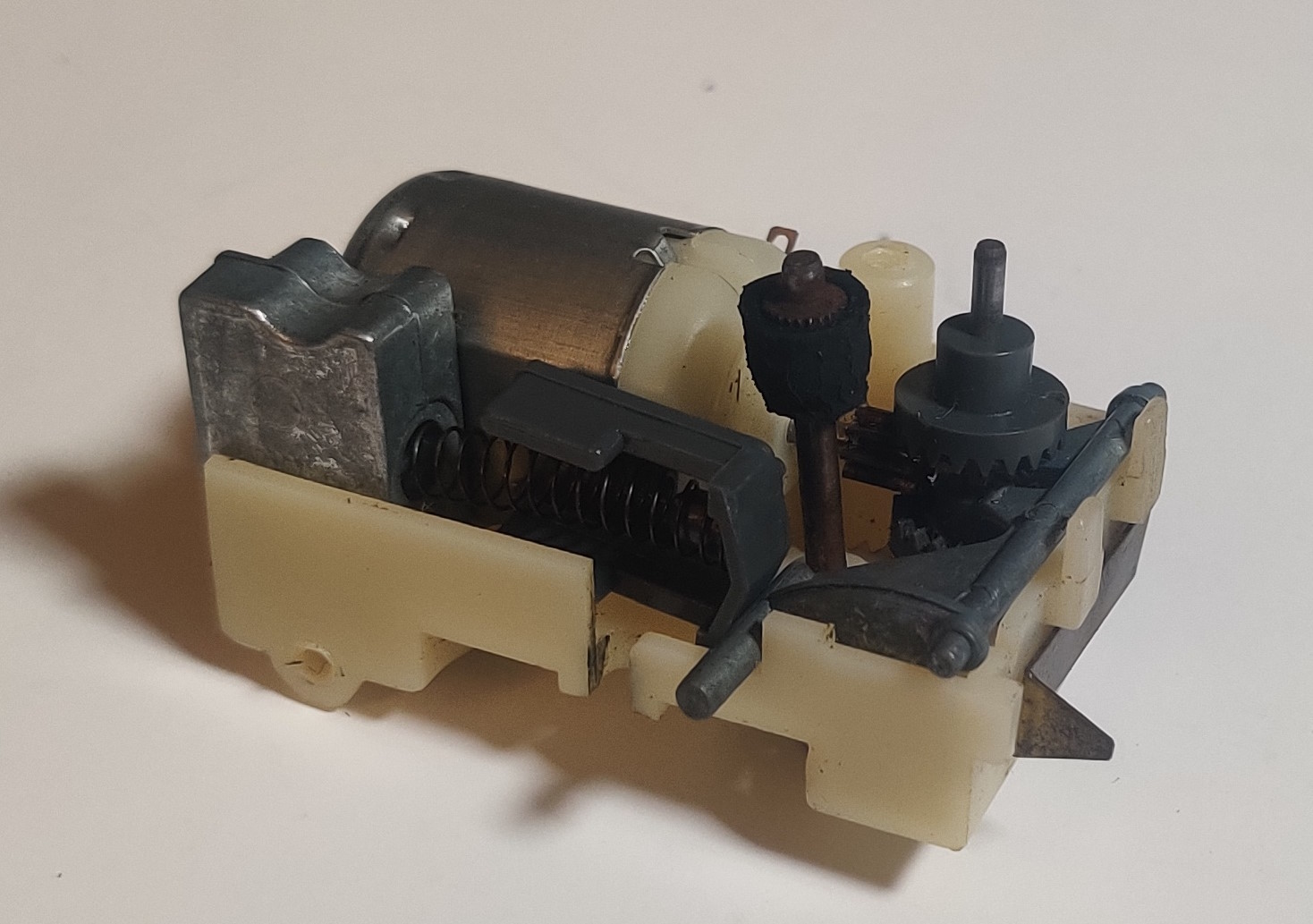
The internal-drive EF66 gearbox relies on two contrate gears on a single shaft which slides back and forth so alternating gears are in contact and reducing from the motor output shaft. A metal "flipper" sits towards the front of the gearbox with a peg that hangs down to hit the reverser rails. A spring-loaded locator puts pressure on the flipper so that it stays to one side or the other but can still be flipped back and forth by the reverser track. The flipper moves the sliding shaft back and forth so that one contrate gear or the other is in contact with the motor. Because the contrate gear's teeth are facing each other, when one is in contact the shaft will rotate in one direction but will reverse direction when the other gear comes in contact. This gives the gearbox its reciprocating motion.
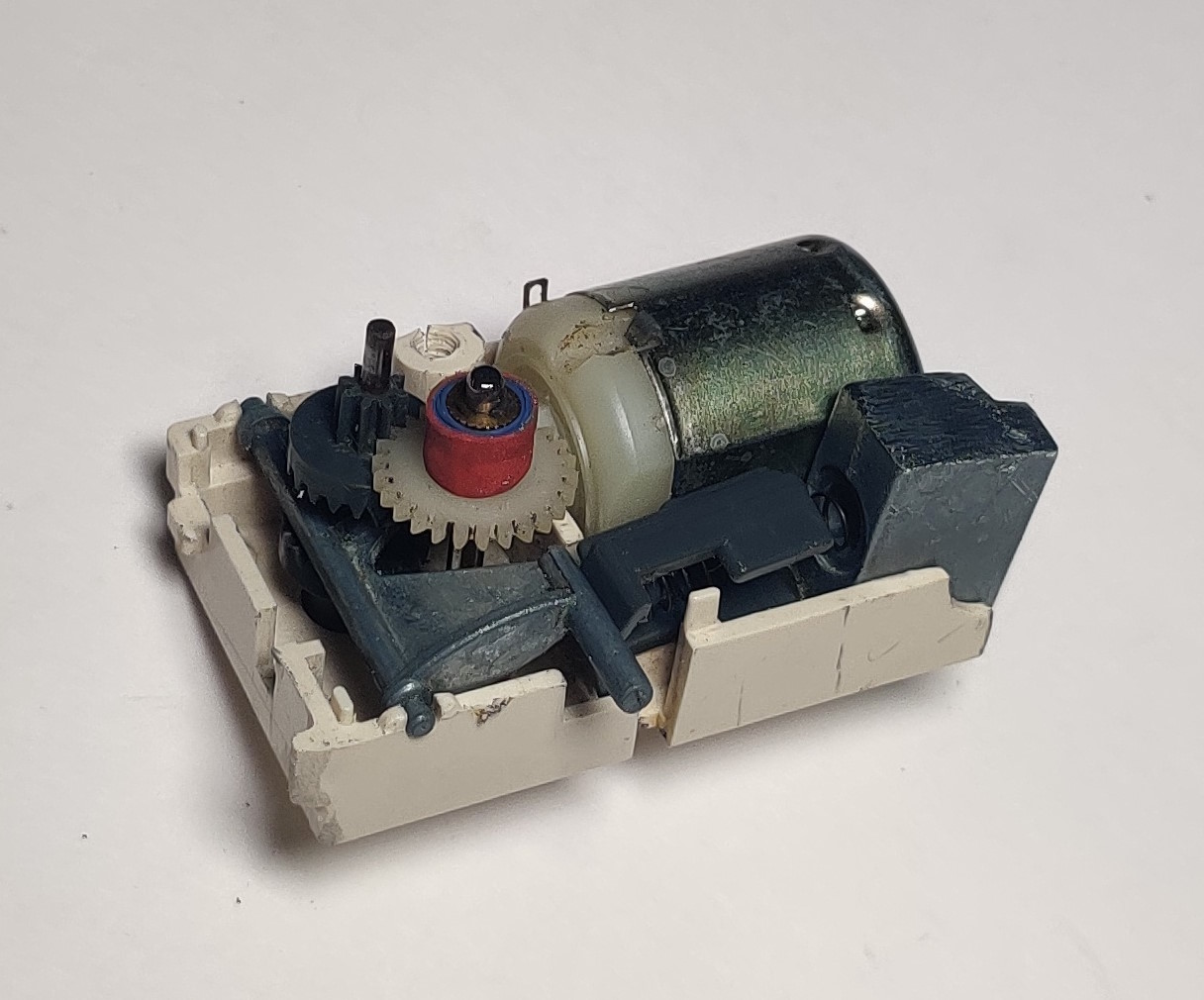
To retrofit a Hong Kong C12 with a reverser, the clicker must be replaced with the spring-loaded locater and the first shaft in the gearbox replaced with the two contrate gears from the EF66 gearbox. I found that some of the plastic towards the bottom of the gearbox where the locater rides needed to be shaved down. It is possible that the tooling was changed to accommodate the plastic insert for the clicker or perhaps like the shorter output shaft this gearbox would have had a thinner locater. The locater and spring are more cramped, implying the entire mechanism may have been smaller in the original design. The metal flipper can be fit into the appropriate slots in the C12 gearbox so the tab sticks out the bottom. Because the gearbox is thinner than the regular Round-Trip gearbox, the original C12 output shaft has to be used, as the EF-66 one is too long.
I had to make some additional repairs because my gearbox had been gutted. I replaced the motor brushes and bent and cut sacrificial contact strips to provide power to the C12 motor. Because the gearbox was missing its original weight I filed down the sacrificial EF-66 weight until it was thin enough to fit in the chassis and hold the spring for the locater in place. I did not have a spare old thin and long coupler so I substituted a modern one which is stiff in the socket but to be honest the stiff rear coupler probably helps it reverse with trucks better.
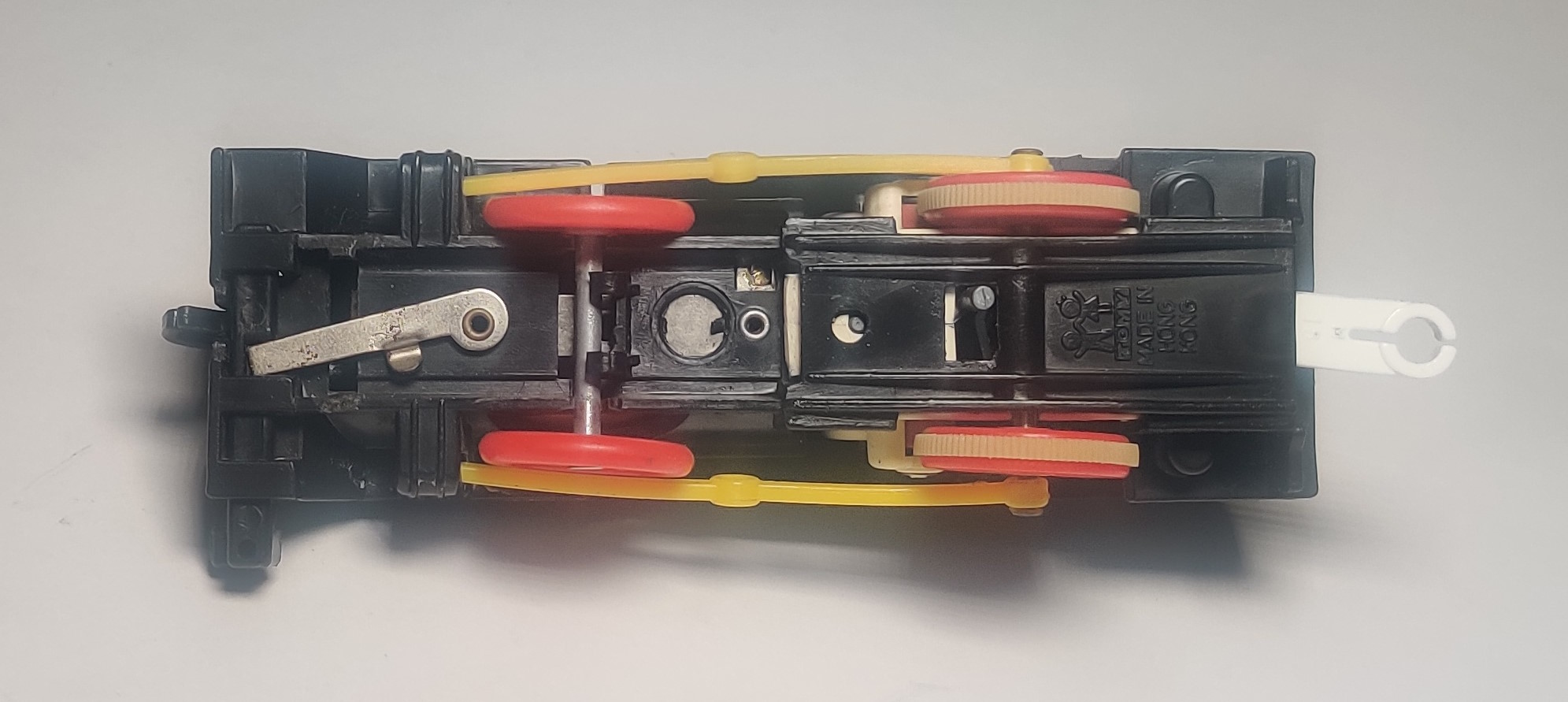
Inserting the reversing gearbox is a little tricky, and I filed down part of the front gearbox tab before realizing that this is probably not necessary if you insert it in a particular way. I assumed like other gearboxes that I could insert the tab at the front of the gearbox first and then rotate the rear of the gearbox into place, but this causes the reverser lever to foul on the chassis. If you insert the gearbox straight down so the direction change lever goes through its slot so the gearbox is located further back than its final position you can then push it forward and into place easily.

Click for video with sound
The C12 is a cool choice for a Round-Trip Plarail as all old power C12 toolings include the front coupler originally added to it could push the rotary snowplow in the first set it was used in.
I found that it is rather hard to get some of these Hong Kong C12s to close properly, especially with a battery inside. I am not sure if it is because of the larger gearbox or if the plastic has shrunk slightly over the years. If this is a problem does originate from the new larger gearbox, it is possible that is one of the reasons Tomy decided to not make the Round-Trip C12. It is a little easier to get it more closed with a AA battery in place of the C battery, but this makes the reversing mechanism less reliable as there is not as much weight contributing to the momentum of the engine required to hit the reverser hard enough to get the lever to flip. The engine flips into neutral and disconnects both contrate gears from the motor pinion momentarily as it changes direction, meaning it needs some momentum to push the lever far enough to get the spring-loaded locater to assist it the rest of the way over. It is interesting to me that Tomy developed this plastic gearbox that would fit in a C12 but never replaced the old power C12 gearbox with a plastic one for the Japanese market until the C12 was finally converted to new power in the mid 90s. Although I do not think that this large gearbox would have been a good choice, I do think Tomy could have developed a thinner plastic gearbox with external rim-drive at some point if they did want to update the Japanese C12. I guess it was easier for them to make a smaller number of metal gearboxes for the C12 and D51s up into the 90s than it was to redo the chassis toolings to take a new gearbox, especially after 1987 when they would have wanted to update them to use a direct-drive gearbox instead of a friction drive one anyways.